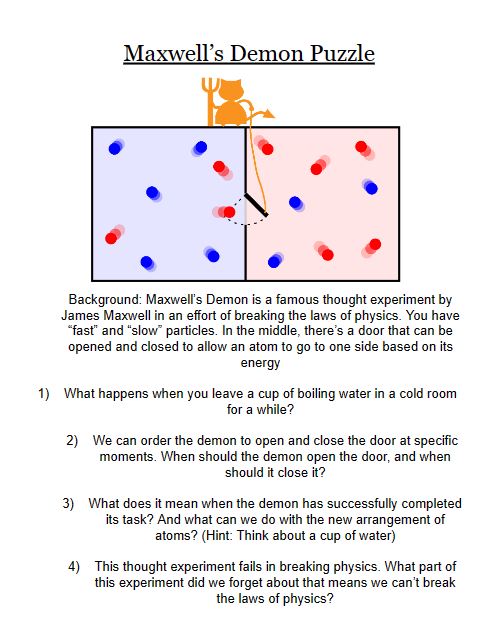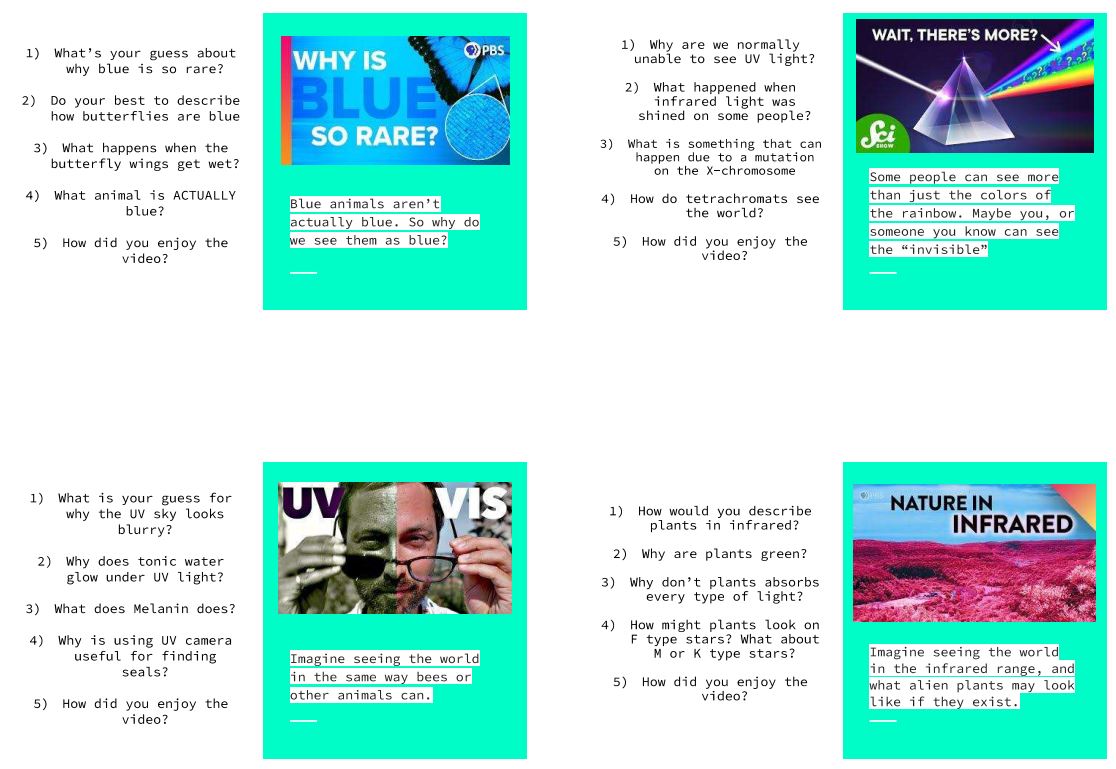2A.3: Meeting Diverse Needs (explanation and evidence)
Cheat sheet for units, symbols, and the GUESS method:
A “cheat sheet” for students who would often find themselves confused by what the units (such as 20 km), or symbols used in equations meant. Since we do not expect the students to memorize all these symbols, this is meant to be provided as a resource for those who do need it. On the back side, there is an explanation to the GUESS method, another scaffolding technique for solving questions and figuring out which equation to use.
Pushing higher achievers:

Students could get choice to approach some questions based on where they felt with their confidence, for some, they got the chance to think more about their world like why we use certain color lamps to keep food warm, or even Maxwell’s Demon.
Or they got the chance to expand their knowledge based on what we learned, into how it connects to the real world. Although, it was also my aim to not just add “more work”, or something that felt like finishing early was a detriment to them, I would try to find ways to expand their learning in non-academic ways. Some things I would do, would be finding videos that one might watch for fun and help nurture one’s creativity. In the example below, students could choose which interested them, and learn about the world without it feeling like it was more classwork.
Those who did watched the videos, really enjoyed them. As part of the questions, I asked their thoughts on the video and here were some of the responses:
“The video was interesting, and I did not even know that blue was so rare in nature.”
“I did enjoy the video a lot, I didn’t know that about butterflies until now”
2B.1: Safe Learning Environment (explanation and evidence)
Portrait of Classroom as a Learning Community – Carlos Hasbun – 2024 MAT Portfolio (clarku.edu)
Within my norms and values, this is how I created routines and expectations to ensure the classroom remains safe, both physically but also allowing students to take academic risks. In the section about resilience and providing second chances, are other ways in which I help provide that safe learning environment.
2D.2: High Expectations (explanation and evidence)
Key Learning Goals – Carlos Hasbun – 2024 MAT Portfolio (clarku.edu)
Within my key learning goals, I state that part of my goals is having students understand the phenomena around them, as well as being able to analyze data. Being able to take a data table and convert meaning from it is a form of high expectations.
And with these high expectations, moments of powerful teaching can occur such as seen in Growth in Student Learning – Carlos Hasbun – 2024 MAT Portfolio (clarku.edu).

